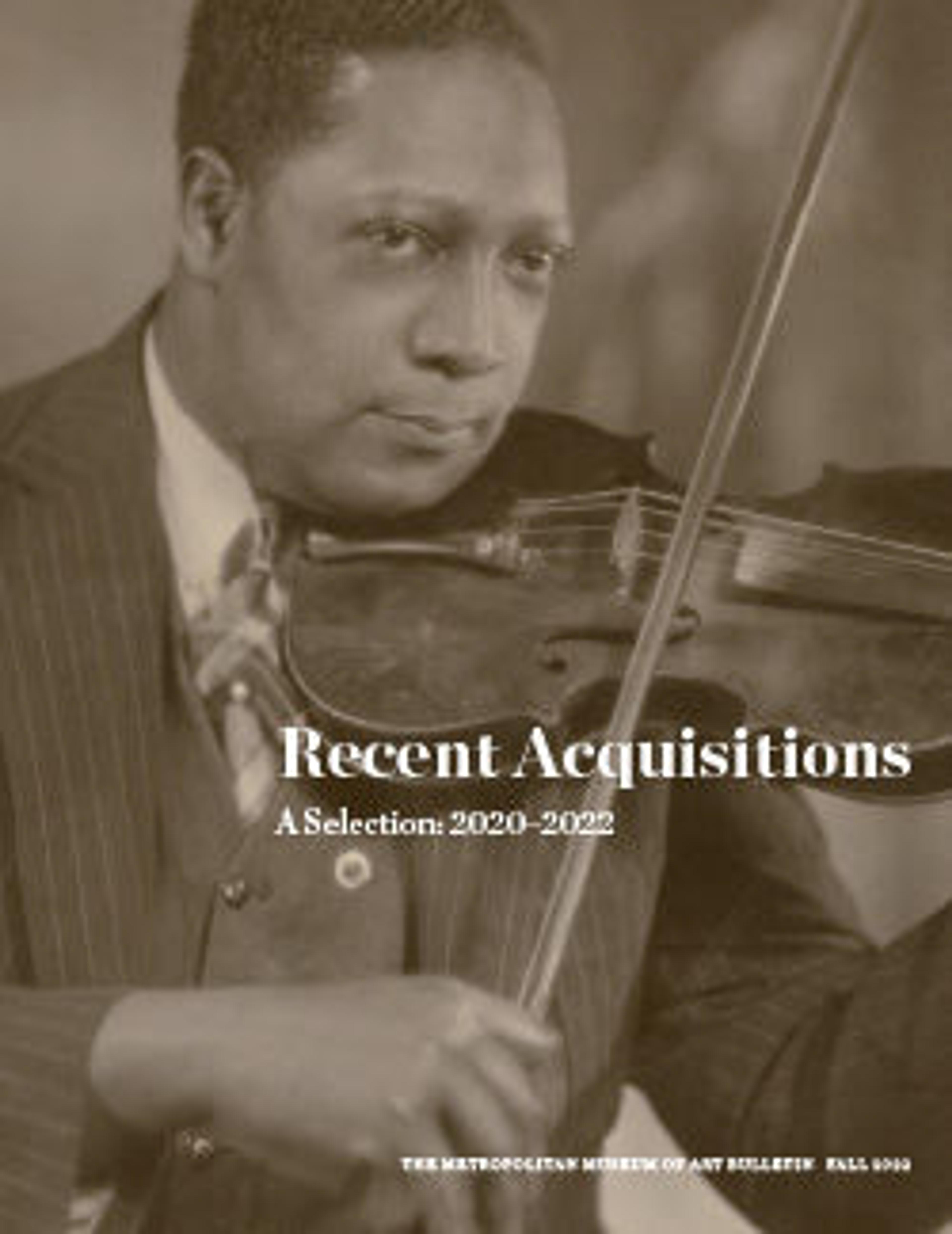Needlework picture of scene from Shakespeare’s "Henry VIII"
This needlework picture was made in the technique of Berlin wool work (so called because initially the brightly colored wool thread was imported from Germany,) a style of embroidery that flourished in Europe and America during the middle decades of the nineteenth century. The printed patterns for Berlin wool work replaced the time-consuming task of drawing an original pattern, allowing the embroiderer to follow a chart in a sort of "paint-by-numbers" style in order to create a highly elaborate finished product. Berlin wool work was executed in many colors and hues, and large pieces like this one were meant to be almost like wool paintings, using different colored threads to create shading and highlights. This piece has been embroidered in tent stitch in multiple different shades of wool, and there are highlights of silk embroidery, as well as chenille yarn incorporated for areas of fur and hair.
This piece is based on Robert Thew's (1758–1802) original stipple engraving, King Henry the Eighth. Act IV, Scene II. Abbey of Leicester. Wolsey, Northumberland, & Attendants, Abbot of Leicester, Etc. after a painting by Richard Westall (1765–1836) for the Boydell Shakespeare Gallery (1789-1805), an establishment founded in the late-eighteenth century in London, England dedicated to British paintings depicting scenes from Shakespeare’s plays.
According to family history, the piece was made in Albany, New York during the Civil War to keep the artist’s mind occupied during period of the war. This coincides with the tercentenary of Shakespeare’s birth, that was celebrated in England and further afield in 1864, around the time the piece was created.
This piece is based on Robert Thew's (1758–1802) original stipple engraving, King Henry the Eighth. Act IV, Scene II. Abbey of Leicester. Wolsey, Northumberland, & Attendants, Abbot of Leicester, Etc. after a painting by Richard Westall (1765–1836) for the Boydell Shakespeare Gallery (1789-1805), an establishment founded in the late-eighteenth century in London, England dedicated to British paintings depicting scenes from Shakespeare’s plays.
According to family history, the piece was made in Albany, New York during the Civil War to keep the artist’s mind occupied during period of the war. This coincides with the tercentenary of Shakespeare’s birth, that was celebrated in England and further afield in 1864, around the time the piece was created.
Artwork Details
- Title:Needlework picture of scene from Shakespeare’s "Henry VIII"
- Artist:Probably by Agnes (Pruyn) Strain (1839–1898)
- Artist:Possibly by Mary (Putnam) Pruyn (1820–1885)
- Date:ca. 1865
- Geography:(none assigned) Albany, New York
- Culture:American
- Medium:Wool and silk on linen canvas
- Dimensions:45 3/4 × 44 in. (116.2 × 111.8 cm)
Framed: 54 in. × 53 in. × 3 3/4 in. (137.2 × 134.6 × 9.5 cm) - Credit Line:Gift of the Estate of Christopher Monkhouse, 2021
- Object Number:2021.160
- Curatorial Department: The American Wing
More Artwork
Research Resources
The Met provides unparalleled resources for research and welcomes an international community of students and scholars. The Met's Open Access API is where creators and researchers can connect to the The Met collection. Open Access data and public domain images are available for unrestricted commercial and noncommercial use without permission or fee.
To request images under copyright and other restrictions, please use this Image Request form.
Feedback
We continue to research and examine historical and cultural context for objects in The Met collection. If you have comments or questions about this object record, please contact us using the form below. The Museum looks forward to receiving your comments.
